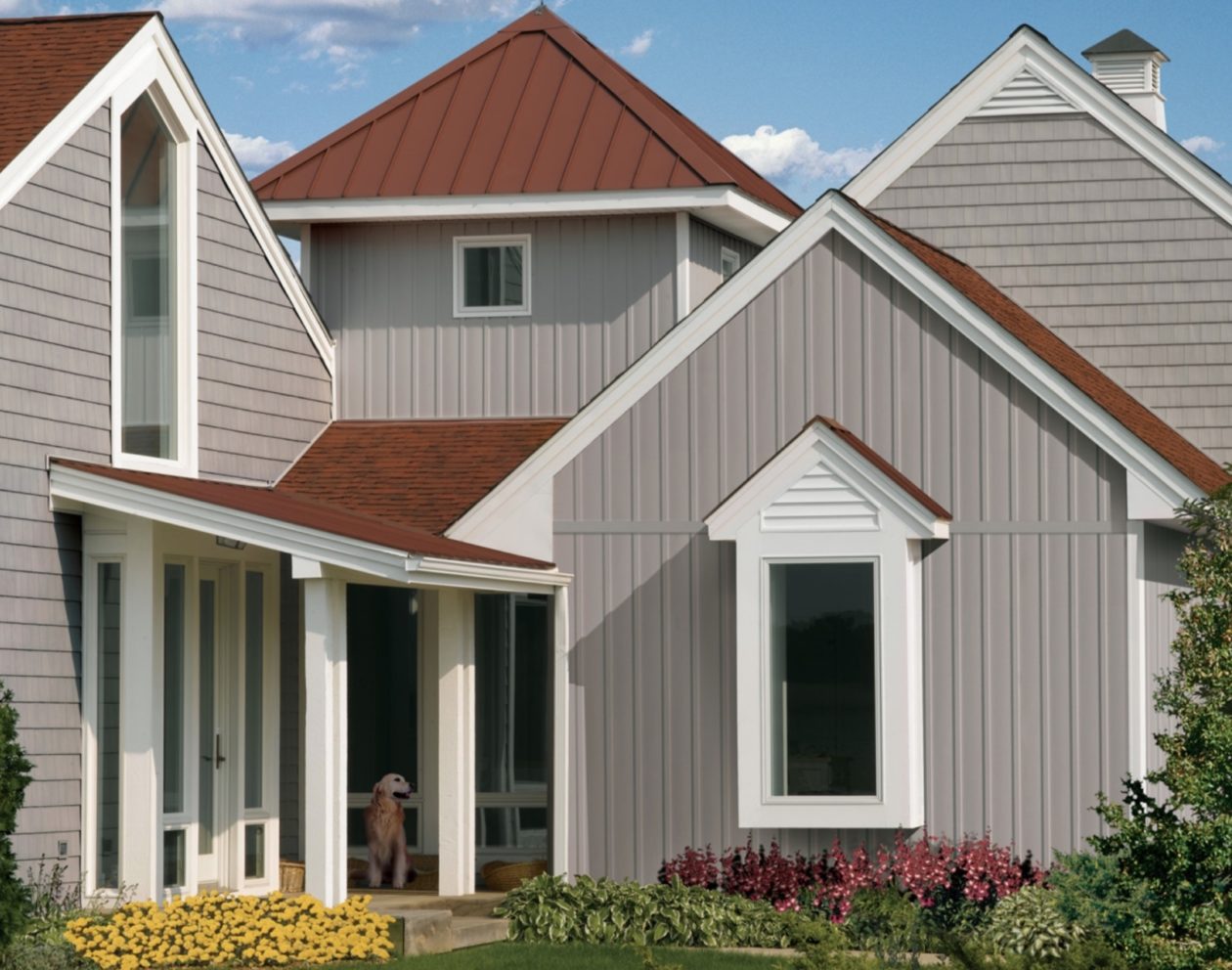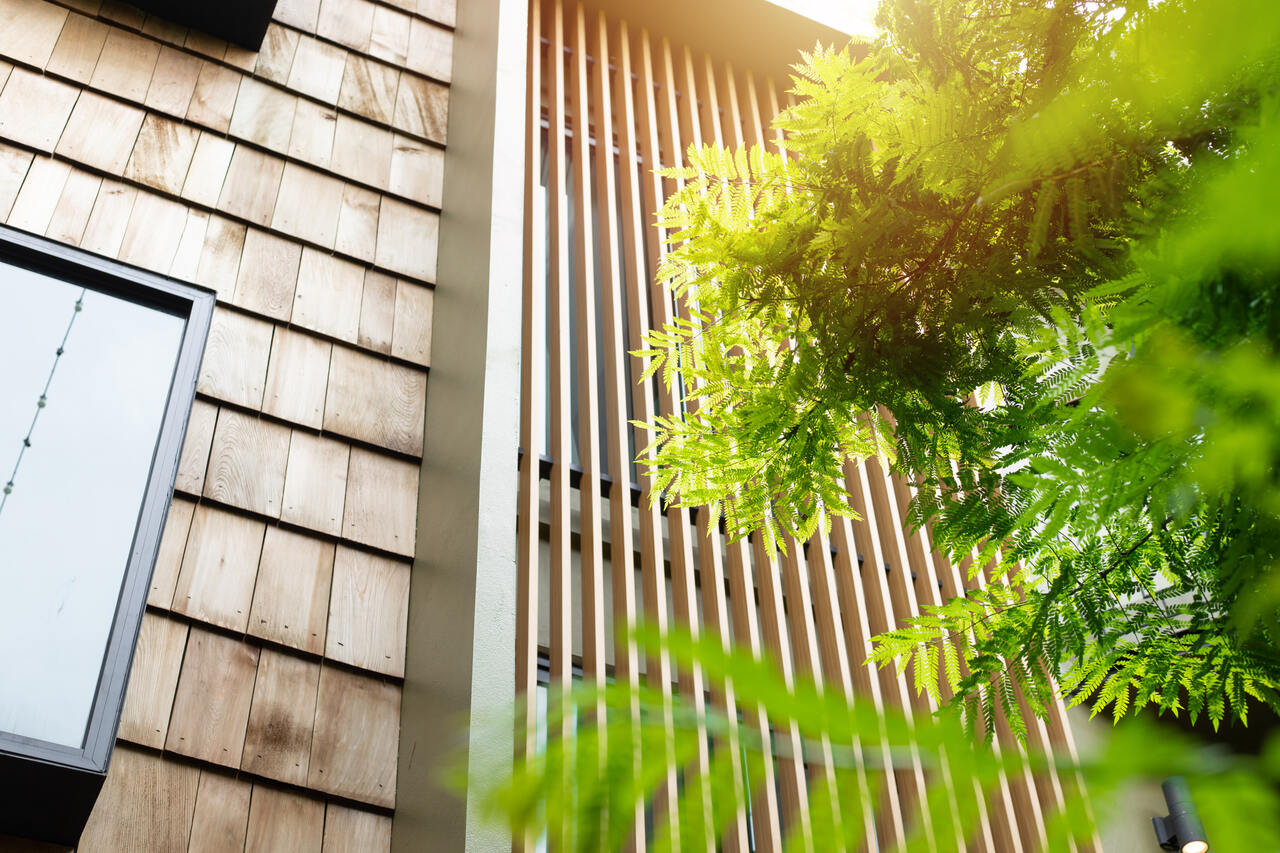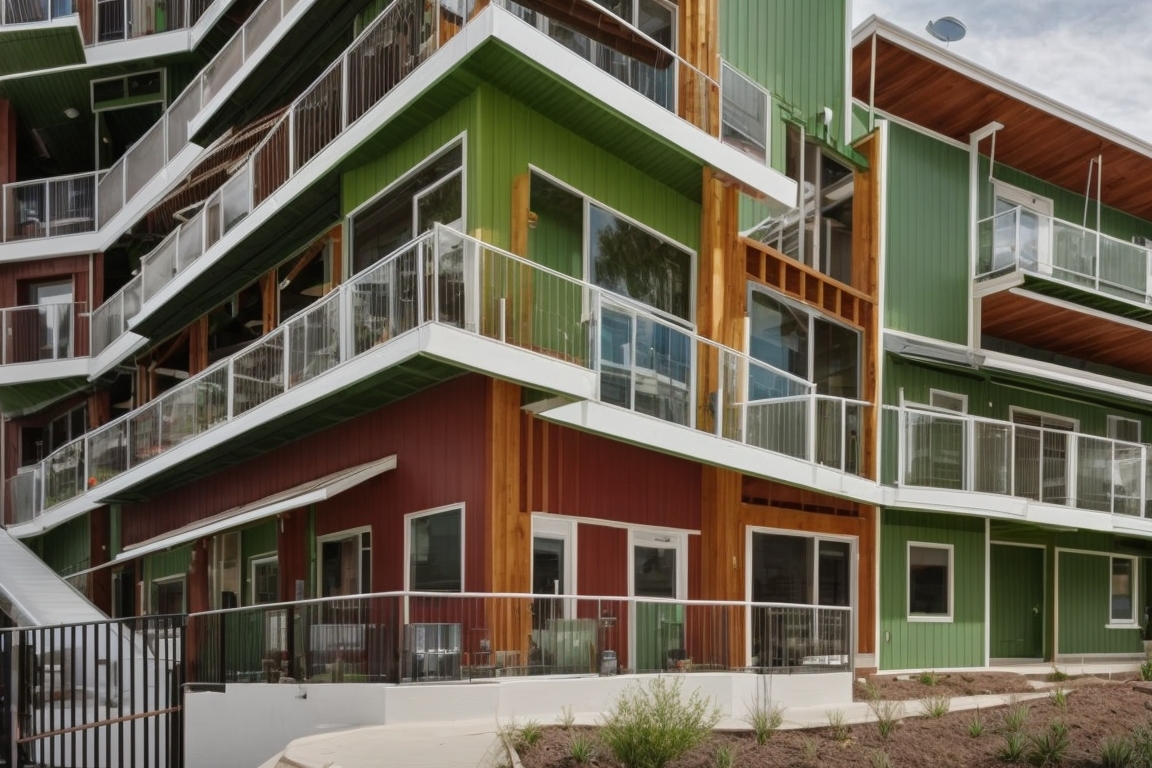Eco-friendly Siding Options for Sustainable Buildings: A Comprehensive Guide

Exploring the world of eco-friendly siding options for sustainable buildings unveils a plethora of innovative materials and practices that are revolutionizing the construction industry. From reclaimed wood to fiber cement, each option offers unique environmental benefits and cost considerations. Let's delve into the realm of eco-conscious building solutions that prioritize sustainability and energy efficiency.
Types of Eco-friendly Siding

Reclaimed wood, fiber cement, engineered wood, metal, and brick are common eco-friendly siding options for sustainable buildings. Each material offers unique environmental benefits in terms of sustainability and energy efficiency.
Reclaimed Wood
Reclaimed wood siding is sourced from old structures like barns or factories, reducing the demand for new timber and minimizing waste. It adds a rustic charm to buildings and can be a cost-effective option for eco-conscious builders.
Fiber Cement
Fiber cement siding is made from a blend of cement, sand, and cellulose fibers, offering durability and resistance to fire, rot, and pests. It is low-maintenance and can be painted to mimic the appearance of wood or other materials.
Engineered Wood
Engineered wood siding is composed of wood strands or fibers bonded with resins and wax. It provides the look of natural wood with enhanced durability and resistance to moisture, making it a sustainable alternative to traditional wood siding.
Metal
Metal siding, such as steel or aluminum, is highly durable and recyclable, reducing environmental impact. It reflects heat, improving energy efficiency by reducing cooling costs in hot climates.
Brick
Brick siding offers excellent thermal mass properties, helping regulate indoor temperatures and reducing the need for heating or cooling. It is long-lasting, low-maintenance, and adds a timeless aesthetic to buildings.
Benefits of Using Eco-friendly Siding

Using eco-friendly siding in building construction offers numerous benefits that contribute to sustainable practices and environmental conservation. Not only does it help in reducing the carbon footprint and energy consumption, but it also has a positive impact on indoor air quality and overall health.
Reducing Carbon Footprint and Energy Consumption
Eco-friendly siding materials such as reclaimed wood, fiber cement, or recycled metal require fewer resources to produce and install compared to traditional siding options. By choosing sustainable materials, builders can significantly decrease the carbon emissions associated with the construction process.
Additionally, eco-friendly siding often provides better insulation, leading to reduced energy consumption for heating and cooling the building.
Improving Indoor Air Quality and Overall Health
Many conventional siding materials contain volatile organic compounds (VOCs) that can off-gas and pollute indoor air quality, causing health issues such as respiratory problems and allergies. Eco-friendly siding options are low or VOC-free, promoting healthier indoor environments for occupants. Furthermore, some eco-friendly siding materials are resistant to mold and mildew growth, preventing potential health hazards and improving overall well-being.
Considerations for Choosing Eco-friendly Siding
When selecting eco-friendly siding options for sustainable buildings, there are several key factors to consider to ensure the best choice for your project. It is important to weigh factors such as durability, longevity, aesthetic appeal, and design flexibility to make an informed decision.
Durability and Longevity
Eco-friendly siding materials vary in their durability and longevity depending on the climate they are exposed to. For example, wood siding may require more maintenance in humid climates compared to fiber cement siding, which is more resistant to moisture. It is crucial to consider the specific weather conditions of your location when choosing eco-friendly siding to ensure it will withstand the elements over time.
Aesthetic Appeal and Design Flexibility
One of the advantages of eco-friendly siding options is the wide range of styles and designs available to suit various architectural preferences. Whether you prefer a modern look with metal siding or a more traditional appearance with reclaimed wood siding, there are eco-friendly options to match your aesthetic vision.
Additionally, eco-friendly siding materials can often be customized and installed in different patterns to enhance the overall design of your sustainable building.
Installation and Maintenance Tips for Eco-friendly Siding

When it comes to eco-friendly siding, proper installation and maintenance are key to ensuring the longevity and efficiency of these sustainable building materials. By following best practices for installation and implementing a regular maintenance routine, you can maximize the benefits of using eco-friendly siding while minimizing environmental impact.
Installation Best Practices
- Ensure proper alignment and spacing during installation to prevent warping or buckling of the siding.
- Use corrosion-resistant fasteners to secure the siding in place and prevent rusting over time.
- Follow manufacturer guidelines and recommendations for installation to guarantee optimal performance of the eco-friendly siding.
- Consider hiring a professional installer with experience working with eco-friendly materials to ensure a smooth and efficient installation process.
Maintenance Guidelines
- Regularly inspect the siding for any signs of damage, such as cracks, chips, or discoloration, and address them promptly to prevent further deterioration.
- Clean the siding periodically using mild soap and water to remove dirt, dust, and other debris that can accumulate on the surface.
- Avoid using harsh chemicals or abrasive cleaners that can damage the eco-friendly siding and compromise its sustainability.
- Apply a fresh coat of eco-friendly paint or sealant as needed to protect the siding from the elements and maintain its appearance.
Disposal and Recycling
- When it's time to replace or dispose of eco-friendly siding, consider recycling options to minimize waste and reduce environmental impact.
- Contact local recycling facilities or organizations that accept eco-friendly building materials for proper disposal and recycling.
- Separate any recyclable components from non-recyclable materials before disposing of the siding to ensure that it can be recycled efficiently.
- Consult with the manufacturer or retailer of the eco-friendly siding for guidance on sustainable disposal practices and recycling options.
Last Recap
In conclusion, the realm of eco-friendly siding options for sustainable buildings opens up a world of possibilities for environmentally conscious construction projects. By choosing materials that reduce carbon footprint, improve indoor air quality, and enhance overall health, builders can create spaces that not only stand the test of time but also contribute positively to the planet.
Embrace the future of sustainable building with eco-friendly siding choices that make a difference.
FAQ Resource
What are some common types of eco-friendly siding materials?
Common types include reclaimed wood, fiber cement, engineered wood, metal, and brick. Each material offers unique benefits in terms of sustainability and energy efficiency.
How does eco-friendly siding contribute to sustainable building practices?
Eco-friendly siding reduces carbon footprint, improves indoor air quality, and promotes overall health in sustainable buildings. By choosing these materials, builders can prioritize environmental responsibility in their projects.
What factors should be considered when selecting eco-friendly siding options for sustainable buildings?
Key factors to consider include durability, longevity in different climates, aesthetic appeal, and design flexibility of the siding choices. These aspects play a crucial role in ensuring the sustainability and effectiveness of the chosen materials.

